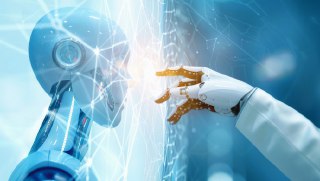Beyond LLMs: The Future of AI Agents with MCP & Google A2A
Beyond LLMs: How MCP and Google A2A are Shaping the Future of AI Agents
The future of artificial intelligence (AI) is no longer a distant hypothesis; it’s unfolding before our eyes. As we traverse the landscape shaped by Multi-Agent Coordination Profiles (MCP) and Google’s Agent-to-Agent (A2A) communication protocols, a new dimension of AI development emerges—one where AI agents are not merely assistants but complex collaborators.
The Transition to Autonomous AI Agents
In the early days of AI, we relied on Linear Language Models (LLMs) to engage in simple conversation and file retrieval. However, as organizations demand more sophisticated outputs, the limitations of static models have become clear. Imagine a future where AI agents can:
- Understand context and adapt their decisions accordingly.
- Work seamlessly with other agents to foster collaboration.
- Utilize multiple tools instantaneously to complete complex tasks.
This is not merely a fanciful vision. With MCP, AI agents gain the ability to share information and strategize among themselves, while Google A2A serves as a pivotal framework that allows agents to communicate with one another in real-time.
Hypothetical Scenario: The Future Workplace
Picture a bustling office in 2030. Teams are no longer composed solely of human employees; alongside them are autonomous AI agents skilled in various domains. An example scenario might unfold in a marketing department:
- Planning a Campaign: An AI agent specialized in market research analyzes customer data, identifies trends, and suggests campaign strategies.
- Content Creation: Another AI collaborator drafts personalized marketing content while leveraging insights from the market research agent.
- Performance Monitoring: A third AI agent tracks ongoing campaign performance and provides real-time insights, prompting immediate adjustments based on data.
The synergistic functioning of agents not only speeds up workflows but significantly enhances the quality of outcomes. Businesses leveraging these capabilities stand to gain substantial advantages, such as increased efficiency and improved decision-making.
Business Benefits of Agentic AI
Understanding how businesses can benefit translates into practical actions. Here are some potential gains:
- Operational Efficiency: AI agents executing repetitive tasks frees up human creativity for strategic decision-making.
- Cost Reduction: Automating processes reduces labor costs while minimizing errors.
- Scalability: AI agents can handle increased workload without the need for proportional human hiring.
ROI on AI Implementation
To understand the return on investment (ROI) implications of implementing AI agents, consider the following hypothetical examples:
- If a marketing team reduces campaign preparation time by 50% using AI agents, that efficiency can lead to an estimated 30% increase in output.
- Automating customer service through AI agents may cut down on response times by 70%, equating to a significant increase in customer satisfaction and retention rates.
Actions to Implement AI Benefits
Organizations aiming to harness these innovations should consider the following steps:
- Invest in Training: Employees must be trained to work alongside AI, fostering collaboration between human and agentic roles.
- Develop a Strategy: Identify key workflows that can be enhanced through AI, creating a roadmap for implementation.
- Initiate Trials: Start with small-scale projects to test agent effectiveness before a full rollout.
Conclusion and Call to Action
As we transition into the agentic AI era driven by MCP and Google A2A, organizations that proactively embrace these technologies are positioned to thrive. The shift from traditional LLMs to collaborative AI agents opens unprecedented opportunities to enhance productivity and innovation.
Ready to explore how your business can benefit from the future of AI agents? Schedule a consultation with our expert team today!


